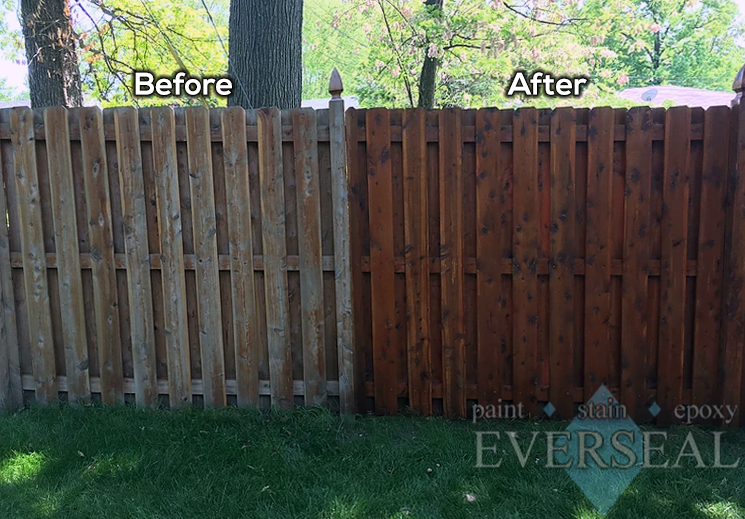How to Pick the Right Fencing Discoloration for Your Property
When it comes to enhancing the appearance and toughness of your home's fence, picking the best tarnish is a vital decision that calls for mindful consideration. Exactly how can you guarantee that you select the best fencing stain that straightens with your home's design and maintenance requirements?
Understanding Timber Kind
To select the ideal fence tarnish, it is necessary to have a comprehensive understanding of the numerous kinds of timber typically utilized for fence. The selection of timber plays an essential duty in establishing the long life and general appearances of the fence. Cedar is a popular choice as a result of its natural resistance to degeneration and pests, making it a resilient option for outside structures. Pine is one more common timber used in secure fencing, known for its affordability and simplicity of staining. Nonetheless, yearn is a lot more prone to bending and decomposing compared to cedar. Redwood is a premium option known for its striking look and natural durability, though it features a higher cost. When selecting a fence stain, it is crucial to think about the sort of timber being made use of to make certain compatibility and ideal protection. Comprehending the characteristics of various wood kinds will assist you make an educated choice when it involves picking the appropriate fence tarnish for your home - Fence Staining Nashville TN.
Selecting the Right Color
Selecting an ideal color for your fence stain is a vital decision that substantially impacts the general visual appeal of your home. Lighter shades such as whites or light grays can make a fence show up larger and include a touch of style to your property. Eventually, the right shade selection will certainly enhance the charm of your fence and elevate the general visual allure of your home.

Taking Into Consideration Openness Degrees
When choosing the right color for your fencing tarnish, another crucial aspect to take into consideration is the degree of transparency that will best match your property's visual and maintenance demands. Transparency levels in fencing discolorations generally fall under 3 groups: transparent, semi-transparent, and solid. Transparent spots allow the natural beauty of the wood to reveal with while offering marginal protection against the components. They are perfect for brand-new or well-kept fences where showcasing the timber grain is a concern. Semi-transparent discolorations supply an equilibrium in between shade enhancement and defense, permitting some wood grain to be visible while giving modest protecting from UV rays and dampness. Solid stains, on the various other hand, supply the most defense as they totally cover the timber with an opaque finish. These appropriate for older fences or those in need of considerable defense or shade adjustment. Take into consideration the level of direct exposure your fence deals with, the preferred upkeep regularity, and the aesthetic you desire to accomplish when selecting the best openness degree for your fencing discolor.
Evaluating Maintenance Demands
Taking into consideration the durability and maintenance of your fencing, reviewing the upkeep requirements is vital in determining the most suitable fence tarnish for your residential property. The level of upkeep required for your fencing can vary depending upon variables such as the kind of timber, weather in your area, and your individual preferences.
When assessing maintenance requirements, it is necessary to consider the toughness of the fencing discolor. Some stains require more frequent reapplication than others, so choosing a tarnish with a much longer life-span can help reduce here are the findings the overall upkeep requirements of your fence (Fence Staining). In addition, aspects such as resistance to UV rays, water, and mildew can impact exactly how typically you need to re-stain your fencing

Checking Examples Prior To Application
Prior to applying any kind of fence tarnish, it is a good idea to conduct sample examinations to ensure compatibility with the timber and desired visual end result. Checking samples enables you to analyze how the tarnish will engage with the particular kind of timber utilized in your fencing, as different timbers can take in spots differently. To begin, pick a little low-profile area of the fencing to apply the discolor examples.
Final Thought
To conclude, choosing the proper fence stain for your home involves comprehending the timber kind, picking the best shade, considering transparency degrees, assessing upkeep needs, and testing examples before application (Fence Staining). By taking these variables into consideration, you can guarantee that your fencing stain complements your building while providing the essential security and longevity. Make an informed decision to enhance the look and longevity of your fence